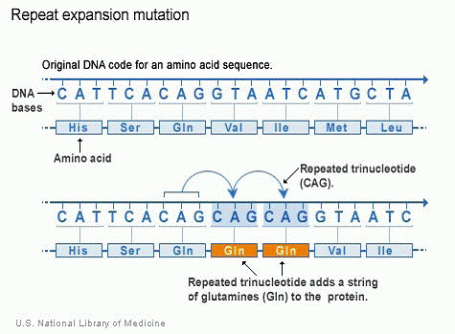Nelson Vergel
Founder, ExcelMale.com
Androgen Receptor Gene CAG Repeat Polymorphism Independently Influences Recovery of Male Sexual Function After Testosterone Replacement Therapy in Postsurgical Hypogonadotropic Hypogonadism
Tirabassi G, delli Muti N, Corona G, Maggi M, Balercia G. Androgen Receptor Gene CAG Repeat Polymorphism Independently Influences Recovery of Male Sexual Function After Testosterone Replacement Therapy in Postsurgical Hypogonadotropic Hypogonadism. The Journal of Sexual Medicine. http://onlinelibrary.wiley.com/doi/10.1111/jsm.12493/abstract
Introduction Few and contradictory studies have evaluated the possible influence of androgen receptor (AR) gene CAG repeat polymorphism on male sexual function.

Aim In this study we evaluated the role of AR gene CAG repeat polymorphism in the recovery of sexual function after testosterone replacement therapy (TRT) in men affected by postsurgical hypogonadotropic hypogonadism, a condition which is often associated with hypopituitarism and in which the sexual benefits of TRT must be distinguished from those of pituitary-function replacement therapies.
Methods Fifteen men affected by postsurgical hypogonadotropic hypogonadism were retrospectively assessed before and after TRT.
Main Outcome Measures Main outcome measures included sexual parameters as assessed by the International Index of Erectile Function questionnaire, levels of pituitary dependent hormones (total testosterone, free T3, free T4, cortisol, insulin-like growth factor-1 [IGF-1], prolactin), and results of genetic analysis (AR gene CAG repeat number).
Results Plasma concentrations of free T3, free T4, cortisol, and prolactin did not vary significantly between the two phases, while testosterone and IGF-1 increased significantly after TRT. A significant improvement in all sexual parameters studied was found.
The number of CAG triplets was negatively and significantly correlated with changes in all the sexual parameters, while opposite correlations were found between changes in sexual parameters and changes in testosterone levels; no correlation of change in IGF1 with change in sexual parameters was reported.
On multiple linear regression analysis, after correction for changes in testosterone, nearly all the associations between the number of CAG triplets and changes in sexual parameters were confirmed.
Conclusions Shorter length AR gene CAG repeat number is associated with the recovery of sexual function after TRT in postsurgical male hypogonadotropic hypogonadism, independently of the effects of concomitant pituitary-replacement therapies.
Tirabassi G, delli Muti N, Corona G, Maggi M, Balercia G. Androgen Receptor Gene CAG Repeat Polymorphism Independently Influences Recovery of Male Sexual Function After Testosterone Replacement Therapy in Postsurgical Hypogonadotropic Hypogonadism. The Journal of Sexual Medicine. http://onlinelibrary.wiley.com/doi/10.1111/jsm.12493/abstract
Introduction Few and contradictory studies have evaluated the possible influence of androgen receptor (AR) gene CAG repeat polymorphism on male sexual function.
Aim In this study we evaluated the role of AR gene CAG repeat polymorphism in the recovery of sexual function after testosterone replacement therapy (TRT) in men affected by postsurgical hypogonadotropic hypogonadism, a condition which is often associated with hypopituitarism and in which the sexual benefits of TRT must be distinguished from those of pituitary-function replacement therapies.
Methods Fifteen men affected by postsurgical hypogonadotropic hypogonadism were retrospectively assessed before and after TRT.
Main Outcome Measures Main outcome measures included sexual parameters as assessed by the International Index of Erectile Function questionnaire, levels of pituitary dependent hormones (total testosterone, free T3, free T4, cortisol, insulin-like growth factor-1 [IGF-1], prolactin), and results of genetic analysis (AR gene CAG repeat number).
Results Plasma concentrations of free T3, free T4, cortisol, and prolactin did not vary significantly between the two phases, while testosterone and IGF-1 increased significantly after TRT. A significant improvement in all sexual parameters studied was found.
The number of CAG triplets was negatively and significantly correlated with changes in all the sexual parameters, while opposite correlations were found between changes in sexual parameters and changes in testosterone levels; no correlation of change in IGF1 with change in sexual parameters was reported.
On multiple linear regression analysis, after correction for changes in testosterone, nearly all the associations between the number of CAG triplets and changes in sexual parameters were confirmed.
Conclusions Shorter length AR gene CAG repeat number is associated with the recovery of sexual function after TRT in postsurgical male hypogonadotropic hypogonadism, independently of the effects of concomitant pituitary-replacement therapies.
Last edited:















